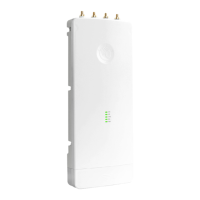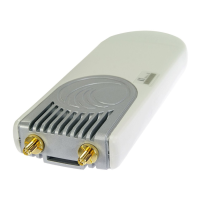PAGE 1-7
Time division duplexing
TDD cycle
ePMP links operate using Time Division Duplexing (TDD). The links employ a TDD cycle in which the
Access Point determines which Subscriber Modules may transmit and when based on the configured
downlink/uplink ratio (duty cycle). Three fixed Downlink/Uplink frame ratios are available 75/25,
50/50 and 30/70.
OFDM and channel bandwidth
ePMP 3000 transmits using Orthogonal Frequency Division Multiplexing (OFDM). This wideband signal
consists of many equally spaced sub-carriers. Although each sub carrier is modulated at a low rate using
conventional modulation schemes, the resultant data rate from all the sub-carriers is high.
The channel bandwidth of the OFDM signal is 20 MHz, 40 MHz or 80 MHz, based on operator
configuration.
Each channel is offset in center frequency from its neighboring channel by 5 MHz.
Adaptive modulation
ePMP 3000 can transport data over the wireless link using a number of different modulation modes
ranging from 256-QAM to QPSK. For a given channel bandwidth and TDD frame structure, each
modulation mode transports data at a fixed rate. Also, the receiver requires a given signal to noise ratio
in order to successfully demodulate a given modulation mode. Although the more complex modulations
such as 256-QAM will transport data at a much higher rate than the less complex modulation modes, the
receiver requires a much higher signal to noise ratio.
ePMP 3000 provides an adaptive modulation scheme where the receiver constantly monitors the
quality of the received signal and notifies the far end of the link of the optimum modulation mode with
which to transmit. In this way, optimum capacity is achieved at all times.

